Watershed Management involves the strategic use of land and water resources to achieve maximum production while minimizing harm to the environment and people.
A watershed is a geographically defined region that is drained by a network of streams. A watershed consists of its physical and hydrological natural resources, as well as its human resources.
Watershed Management: A Holistic Approach
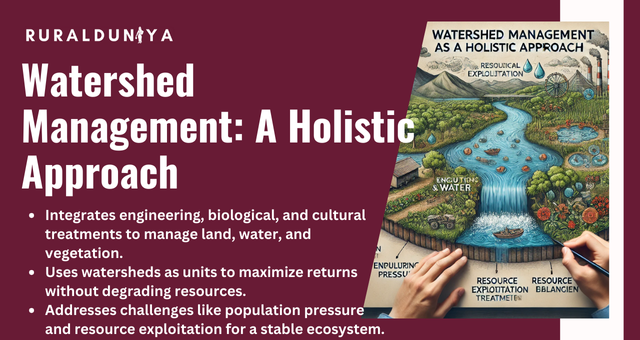
Watershed management being a natural hydrological entity, it responds most effectively to various engineering, biological and cultural treatments. India supports roughly 15% of the world’s population and occupies 2.4% of its area.
The life support system relies on land, water, and vegetation. Rapid human and bovine population growth, overexploitation of natural resources for food, fodder, and fuel, and improper management make the ecosystem unstable and precariously balanced.
Watersheds can be used as the basic unit of development to conserve and manage land, water, and vegetation resources to maximize return without degradation. Natural hydrological entities like watersheds respond best to engineering, biological, and cultural treatments.
Watershed Management Definition
A watershed is a geohydrological unit that collects water and channels it to a central location through a network of drains. All territory on Earth is encompassed under a specific watershed. A watershed refers to the combined land and water region that contributes runoff to a central place.
A watershed is a geographical region defined by a boundary where water and land meet. Within this region, surface runoff gathers and exits the watershed through a singular point, flowing into a larger river or lake.
Objectives of Watershed Management
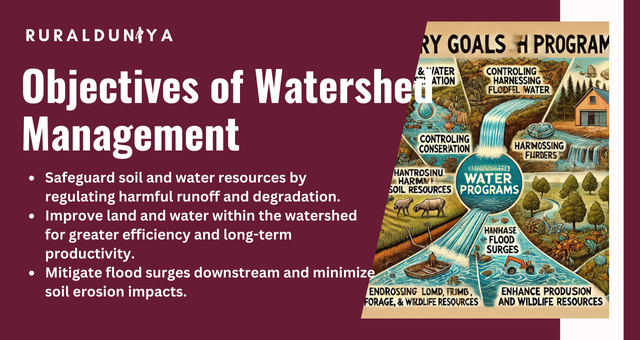
The primary goals of watershed programs are –
- To regulate and mitigate harmful runoff and degradation, with the ultimate aim of preserving and safeguarding soil and water resources.
- To effectively control and harness the discharge water for practical use.
- The objective is to safeguard, preserve, and enhance the land within the watershed in order to achieve greater efficiency and long-term productivity.
- To safeguard and improve the water resource that originates in the watershed.
- To assess and mitigate soil erosion and minimize the impact of sediment yield on the watershed.
- To restore the declining condition of the fields.
- To mitigate the surges of water during flooding in places downstream.
- To enhance and augment the production of timber, forage, and wildlife resources.
Watershed Management Concept
It is a comprehensive method for sustainably managing the land and water resources in a specific geographic area called a watershed or catchment.
It encompasses the comprehensive management of all elements of the watershed, such as land, water, vegetation, and socio-economic factors.
The objective is to advance the preservation, rehabilitation, and responsible exploitation of natural resources while simultaneously satisfying the requirements and ambitions of the local populations.
Watershed Management Advantages and Disadvantages
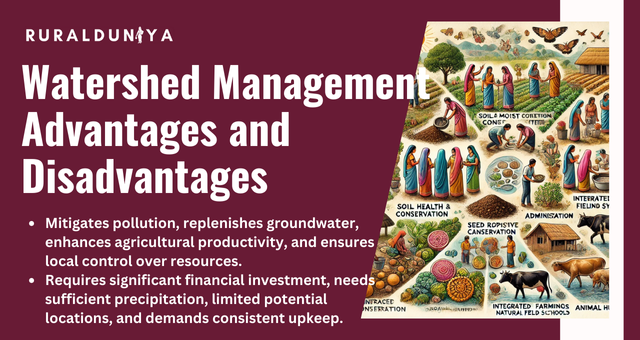
Advantages:
- Mitigates pollution.
- Facilitates groundwater replenishment.
- The locals exert control over these natural resources, resulting in a reduction of mismanagement and over-exploitation.
- It enhances agricultural productivity.
Disadvantages:
- Constructing a watershed requires significant financial investment.
- The construction of a watershed necessitates a region with sufficient precipitation.
- The potential locations for constructing a watershed are extremely limited.
- Watersheds necessitate consistent upkeep.
Watershed Management Model
Since the 1960s, scientists have utilized computerized watershed models to simulate hydrology, erosion, deposition, and nonpoint pollution loads. Recently developed ecological watershed models and applications are being used.
The phrase “watershed modeling” implies a category of geographical models that represent water movement and processes that modify water quantity and quality.
Geographical ecological models like forest ecology, drought effects on crops and crop yields, habitat appropriateness for fauna and flora, and others may differ from this kind.
Watershed Management Diagram
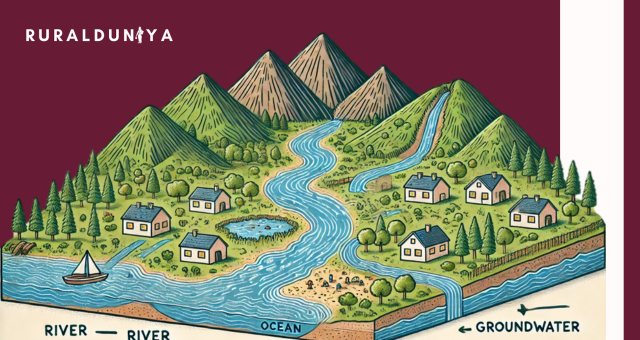
A watershed, also known as a drainage basin or catchment region, refers to a defined land area that collects and directs water into a particular body of water. It functions as a self-contained system for collecting and removing rainwater from the surface.
A water divide or ridge line is a natural border that separates one watershed from another.
Types of Watershed Management
Classification is based on factors such as size, drainage, shape, and land use pattern.
- Macro watershed (> 50,000 Ha)
- Sub watershed (10,000 to 50,000 Ha)
- Milli watershed (1000 to 10,000 Ha)
- Micro watershed (100 to 1000 Ha)
- Mini watershed (1-100 Ha)
Components of Watershed Management
It is a holistic approach that incorporates multiple elements to generate long-lasting and environmentally friendly results –
- Soil and water conservation
- Plantation
- Agronomical practices
- Livestock management
- Renewable energy
- Institutional developments
Principles of Watershed Management
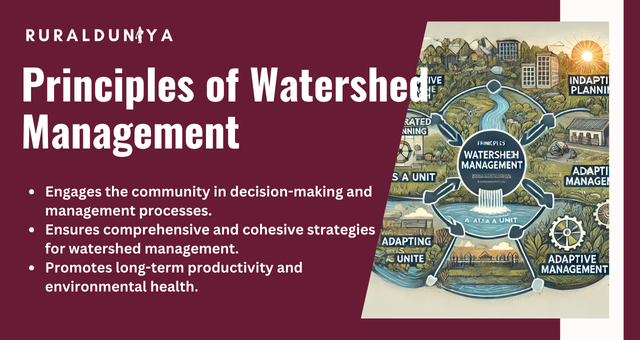
It is directed by specific concepts in order to achieve efficient and enduring results:
- Participatory Approach
- Integrated Planning
- Watershed as a Unit
- Adaptive Management
- Sustainable Use of Resources
Watershed Management Strategies
A watershed strategy enhances the empirical foundation for decision making and directs management endeavors towards basins and watersheds where they are most necessary.
The effectiveness of both point and nonpoint control tactics is enhanced when implemented within a watershed strategy, as this approach facilitates the timely and targeted formulation of Total Maximum Daily Loads (TMDLs) or alternative measures.
Watershed Management Schemes in India
List of Water Conservation Mngement Yojana are –
- Ground Water Management And Regulation
- Pradhan Mantri Krishi Sinchayee Yojana
- Irrigation Census
- Namami Gange
- Flood Management Program
- River Basin Management
- Pancheshwar Multipurpose Project
- Sutlej-Yamuna Link Canal
- River Management Activities And Works Related To Border Area
- Flood Forecasting
- National Water Mission
- Farakka Barrage Project
- National Hydrology Project
- Research & Development Programme In Water Sector
- Atal Bhujal Yojana
- Development Of Water Resources Information System
- Dam Rehabilitation And Improvement Programme
Watershed Management Examples
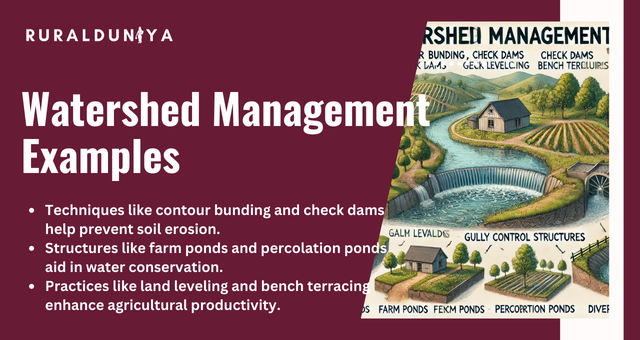
Effective example are the following:
- Contour bunding / graded bunding.
- Check dams and gully control structures.
- Land levelling / land smoothening.
- Bench terracing.
- Farm ponds.
- Percolation ponds.
- Waterways.
- Diversion drains.
Watershed Management and Rainwater Harvesting
(i) Watershed Management: It is a crucial tool for preserving water resources, enhancing agricultural output, and preventing ecological deterioration. This approach enhances the quality of life for individuals.
(ii) Rainwater Harvesting: Rainwater harvesting is a method used to enhance the replenishment of groundwater by collecting and storing rainwater in underground reservoirs, with the purpose of fulfilling water needs.
Integrated Watershed Development Programme (IWMP)
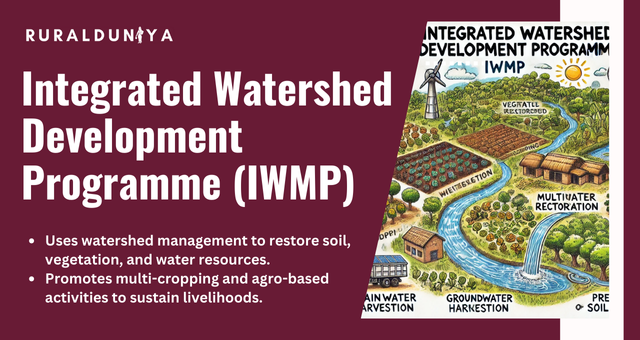
From 2009-10, the Department of Land Resources, Ministry of Rural Development is undertaking the Integrated Watershed Development Programme (IWMP) to cover 55 million hectares of rain-fed land by 2027.China has the largest watershed program, followed by the IWMP.
It uses watershed management to restore ecological balance by harnessing, preserving, and developing degraded natural resources like soil, vegetative cover, and water. The program is funded 90:10 by the central and state governments and executed in all states.
This allows multi-cropping and different agro-based activities, which assist watershed residents sustain their livelihoods. IWMP, OFWM, and AIBP were merged into Pradhan Mantri Krishi Sinchayee Yojana in 2015.
IWMP prevents soil runoff, regenerates plants, harvests rainwater, and recharges the groundwater table.
Last Word
Watershed management requires a careful balance between economic and environmental goals, as well as a thorough analysis of all interactions within the watershed system. This equilibrium is crucial for nations at different phases of advancement.
There is a growing number of conflicts arising from competition for water resources among agricultural, industry, urban home use, as well as between different State administrations. Effective water management is essential for both economic growth and well-being of individuals.
FAQs
What purpose can watershed management serve?
A key goal of watershed management is to negotiate a balance between stakeholders’ interests and often competing needs and jointly identify resource use options that balance economic, social, and environmental objectives and can achieve the most consensus.
What is the main aim of watershed?
Watershed management’s primary goal is to protect a catchment’s plant, soil, and water resources while also advancing human welfare.
What are the two main parts of watershed management?
Land management, water management, and biomass management comprise the three primary components of watershed management.
What is a watershed also known as?
The Hydrologic Unit Codes (HUC) of a watershed, which is also known as a drainage basin or catchment, are defined on various dimensions based on the geography that is most pertinent to its specific area.

Nishank is a social impact enthusiast with a solid foundation in public policy, micro-enterprise, and agribusiness. Growing up in a farmer’s family has given him a profound connection to rural communities, fueling his passion to empower people towards self-reliance. He completed his undergraduate studies at the Delhi University and earned a master’s degree in Rural Management from National Institute of Rural Development & Panchayati Raj in Hyderabad.


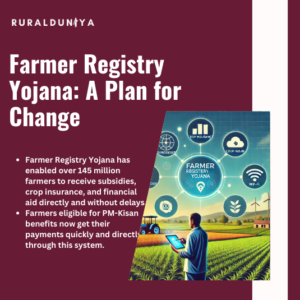
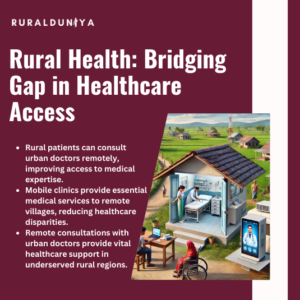
Please, can I get this and related papers in pdf?
This isn’t just writing; it’s a beautiful exploration of thought, full of insights that feel like small revelations.
Thank you! Glad it resonated and sparked something meaningful.
Thank you so much! Truly grateful it spoke to you that way.